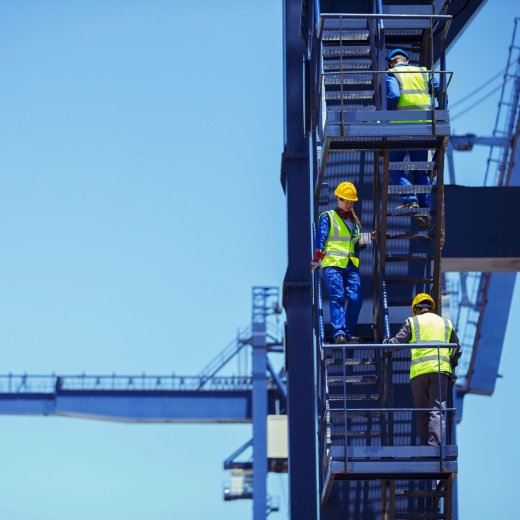Any watering down of working at height legislation could increase the risks to construction workers and lead to a rise in insurance premiums.
One of the main arguments put forward by those in favour of Brexit was the concept of “taking back control”, and for many this meant moving away from EU legislation. This was largely the aim of the government’s Retained EU Law (Revocation and Reform) Bill, which planned for all EU law to be removed by 31 December 2023.
Pressure from unions and businesses – and concerns around the lack of alternatives to legislation in many cases – prompted a rethink, with the government instead moving to list the legislation that was to be removed by the end of the year.
For those in the construction industry, there has been particular concern over the potential for the Work at Height Regulations 2005 to be part of this, but – for now at least – it looks as if this will not be the case. “The Work at Height Regulations 2005 have been removed from the Act, and as a result will not automatically be repealed,” says Jamie Hare, associate, dispute resolution and litigation, at Tees law firm.
“The Health and Safety Executive have indicated that the industry will be consulted on any proposed amendments to the regulations. The truth is, as the law stands, the Secretary of State alone has the power to revoke or amend the regulations without consultation from Parliament or key stakeholders so a close eye will need to be kept on the regulations moving forward.”
Falls are a serious risk to life
There are good reasons why retaining the legislation makes sense. HSE figures for 2022-23 reveal that 40 out of 135 work-related deaths were caused by falls from height, and around a third of fatal accidents occur in the construction sector. “The regulations have been effective at reducing fatalities and have been active for 17 years without the need for any fundamental amendments,” says Hare. “They are straightforward and practical, and have become embedded in existing policies, procedures and training.”
"HSE figures for 2022-23 reveal that 40 out of 135 work-related deaths were caused by falls from height, and around a third of fatal accidents occur in the construction sector"
Simon Cullingworth is managing director of safety equipment manufacturer Metreel. He believes there’s a risk that were the regulations to be scrapped it would open the door for unscrupulous employers to lower standards. “While many employers are likely to keep their workers safe and work to the same standards, there are some who will ease their rules in order to save money,” he warns. “Without any specific reassurances on health and safety legislation updates before the automatic expiry date, the removal or even a ‘watered down’ version of the regulations could result in a step backwards in safety when working at height.”
Mamata Dutta, a partner at international law firm Reynolds Porter Chamberlain (RPC), who specialises in health and safety, says concerns around scrapping or watering down the existing legislation are well founded. “The impact of Brexit is that any legislation which is intended to replace EU legislation should either be equivalent to or less onerous than its EU counterpart,” she points out. “This has led to suggestions that the new legislation could be less prescriptive, which could potentially expose employees to more risks.” On balance, though, she believes it’s likely that any replacement would be similar to the existing legislation.
Changes could lead to premium increases
Any removal or replacement with lower standards could also impact on insurance premiums, warns Daniel Seely, a financial services lawyer at national law firm Freeths. “If the existing regulations are scrapped, then this presents a higher risk exposure for insurers,” he warns. “By removing the requirements surrounding working from height, this inevitably means that there may be an increase in cases where such work is carried out without the necessary prior planning or preparation, meaning the chance for accidents – big and small – to take place. As a result, insurers will likely start to harden their approach to policy terms during the course of future renewal discussions.”
Martin Parker, head of construction at specialist construction insurer Markel, explains further “If this change to legislation occurs, it could have serious implications to the health and safety standards adopted on a contract site. This would result in insurers either imposing stricter underwriting terms, applying much larger excesses relating to falls from height or declining to offer cover for certain types of trade where regular work at height is common practice.”
There are reasons to be optimistic
Cullingworth is hopeful that the government will issue an update in the near future. “We’re hoping for a decision to enforce a ‘stay of execution’ which could be permitted until June 2026,” he says. “This would give us plenty of time to ensure that any new regulations are up to scratch and don’t become a less burdensome set of rules for employers to inevitably put their workers at more risk than before.”
In the meantime, it’s important that employers continue to adhere to the existing rules and maintain high standards. “The importance of complying with health and safety legislation is essential, not only to reduce the risks to employees but also for employers to understand and appreciate the standards that they are expected to adhere to,” points out Dutta. “This will enable them to respond to any steps taken by the regulators who will continue to keep the protection of employees from falls from height high on their agenda.”
